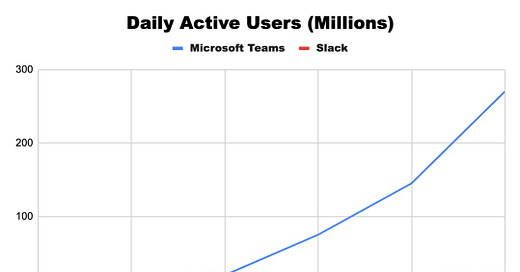The Myth of Opinionated Software
Plus: A brewing freemium battle, and how to price a social media subscription.
SaaS Pricing is hard. PricingSaaS is your cheat code.
Monitor competitors, track real-time benchmarks, discover new strategies, and more.
The quiet social media subscription winners 🤫
While Twitter and Facebook duke it out over verification, another social media standby is crushing the paid subscription game.
Snap recently announced it has over 2.5m users for Snapchat+, its $4/mo offering that includes seemingly silly features like:
The ability to pin someone as your #1 friend (sooo 7th grade)
Custom notification sounds and chat backgrounds
The ability to change the shape of the camera button to various items like a bubble or soccer ball
Simply put, these features allow users to have more fun using the app. It reminds me a lot of Discord’s premium subscription — Discord Nitro, which I wrote about a little while back in the context of “monetizing fun” (Nitro lets users add custom emojis and add a special badge to their profile).
Both subscriptions are low-cost (under $5 per month) and offer a refreshing contrast to Twitter and Facebook, which seem to be taking their paid verification subscriptions a bit too seriously, charging ~$10-$12 per month.
It’s too early to say definitively, but it seems like Snap and Discord have the right approach here. They realize that given their scale, a low-cost subscription with some fun perks can both delight users and generate serious revenue.
Hopefully, Zuck and Elon are taking notes.
The Myth of Opinionated Software 📜
One of my favorite apps is a to-do list called Things.
While it may look like a simple to-do list on the surface, the entire app is underpinned by a productivity philosophy called Getting Things Done (or GTD), which was created by a guy named David Allan.
Things is an example of “opinionated software” or a product that believes a certain way of doing something is the right way. As a result, the entire product is designed to accommodate that line of thinking.
Aside from Things, a couple other examples include Roam Research and Superhuman.
Roam is a note-taking app built on the concept of bi-directional linking. A little while back, I wrote about how it leaned into its cult status.
Superhuman is an email app built around keyboard shortcuts geared to help users breeze through their inbox.
These apps bring their own opinions to the table. As a result, they can often charge a premium compared to generic competitors.
On the other side are apps that bring a blank state to the table, allowing users to impose their own opinions. In these cases, communities of power users often spring up with their own way of using the product.
Examples include Microsoft Excel, Notion, and Google Workspace. While these platforms don’t usually charge a premium themselves, often their superfans will charge for courses, templates, or consulting.
In the end, I’d argue that all software becomes opinionated (there are a million ways to use any program), the difference is whether that opinion comes from the company or its users.
A budding Freemium battle ⚔️
Most companies use a freemium strategy as an offensive move to drive acquisition. The strategy is often employed by upstarts looking to gain traction and accelerate user growth.
Few companies have done that better than Canva, one of the highest-valued private companies in SaaS.
But Canva has a new competitor in the design space thats using Freemium as a defensive move to bolster customer retention.
If you missed it, Microsoft launched a new AI-powered design tool called Designer for free as part of its Microsoft 365 bundle.
As you may be aware, this isn’t the first time Microsoft has launched a free tool to fight off competition.
Microsoft launched Teams in a similar fashion in 2016, which, given the scope of their install base, immediately cut into growth for Slack.
Canva isn’t exactly an innocent bystander here — the company has launched both a PowerPoint alternative and a document tool to challenge Word in the last couple years.
The question is how much Designer will cut into Canva’s growth. Notably, Canva has a much larger userbase than Slack at the time of Microsoft’s launch, crossing 100m users last year.




